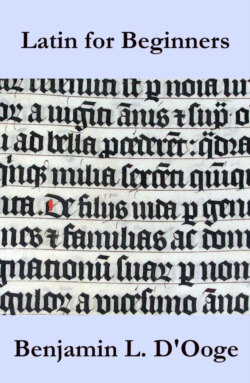Читать книгу Latin for Beginners - BENJAMIN L. D’OOGE - Страница 32
На сайте Литреса книга снята с продажи.
«56.» DIALOGUE JULIA AND GALBA
ОглавлениеFirst learn the special vocabulary, p. 283.
I. Quis, Galba, est Diāna?
G. Diāna, Iūlia, est pulchra dea lūnae et silvārum.
I. Cuius fīlia, Galba, est Diāna?
G. Lātōnae fīlia, Iūlia, est Diāna.
I. Quid Diāna portat?
G. Sagittās Diāna portat.
I. Cūr Diāna sagittās portat?
G. Diāna sagittās portat, Iūlia, quod malās ferās silvae magnae necat.
I. Amatne Lātōna fīliam?
G. Amat, et fīlia Lātōnam amat.
I. Quid fīlia tua parva portat?
G. Corōnās pulchrās fīlia mea parva portat.
I. Cui fīlia tua corōnās pulchrās dat?
G. Diānae corōnās dat.
I. Quis est cum fīliā tuā? Estne sōla?
G. Sōla nōn est; fīlia mea parva est cum ancillā meā.
a. When a person is called or addressed, the case used is called the voc´ative (Latin vocāre, “to call”). In form the vocative is regularly like the nominative. In English the name of the person addressed usually stands first in the sentence. The Latin vocative rarely stands first. Point out five examples of the vocative in this dialogue.
b. Observe that questions answered by yes or no in English are answered in Latin by repeating the verb. Thus, if you wished to answer in Latin the question Is the sailor fighting? «Pugnatne nauta?» you would say «Pugnat», he is fighting, or «Nōn pugnat», he is not fighting.
